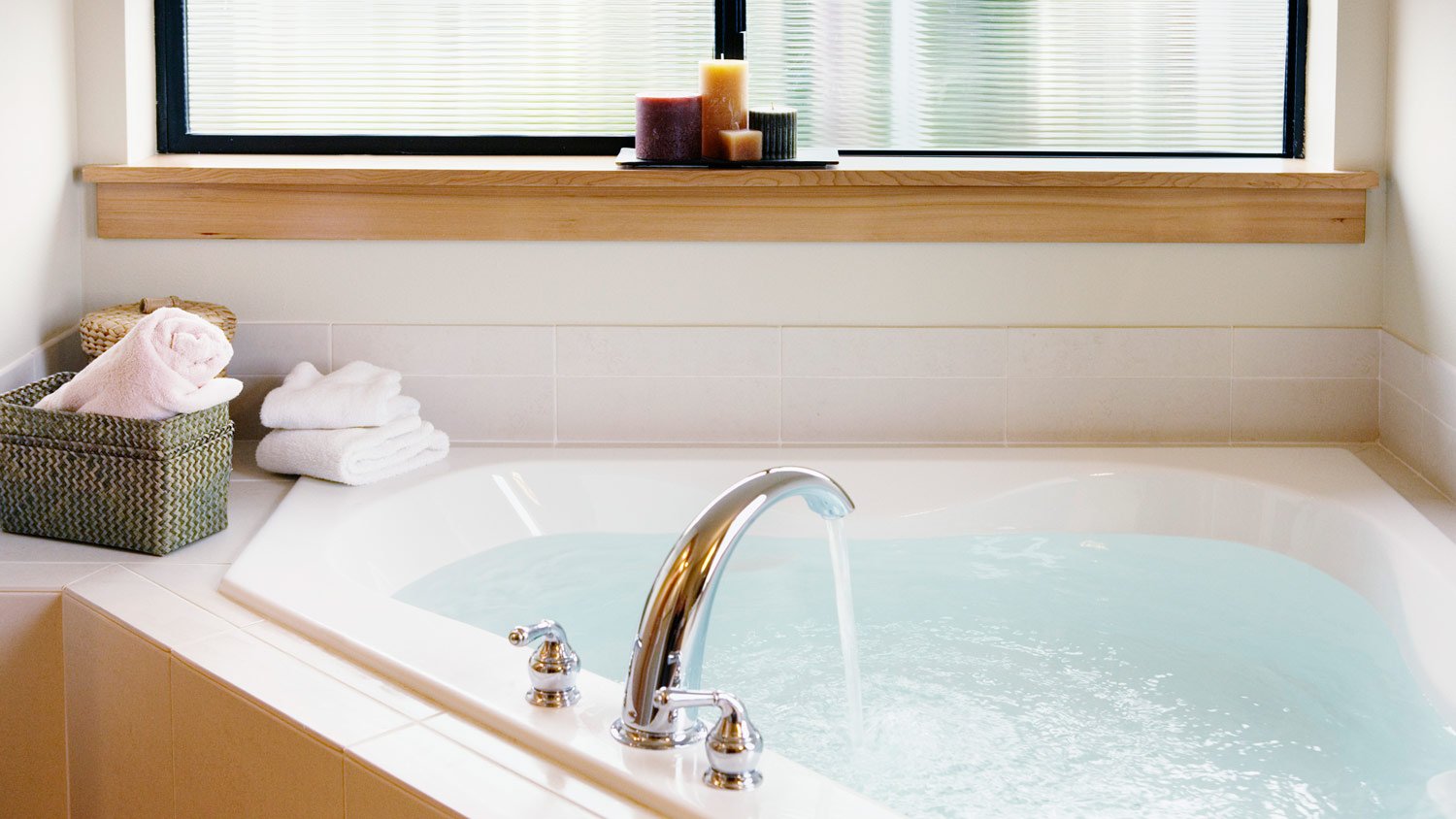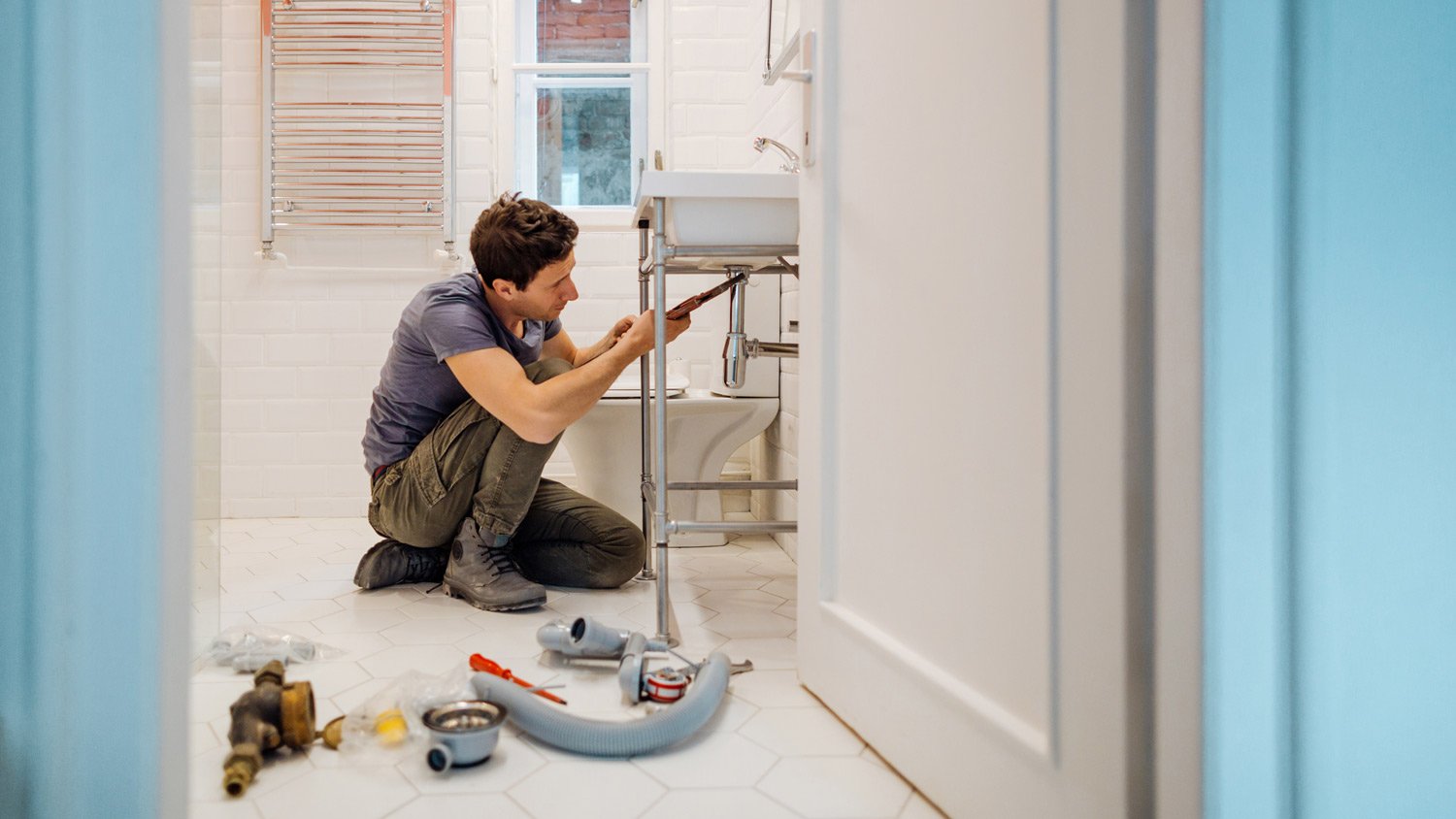6 Essential Plumbing Emergency Tips
Plumbing emergencies can be expensive problems to have if you don't act quickly


Clogged toilets are terrible. Sewage backing up into your bathtub? Even worse. As a homeowner, you will likely face some type of plumbing emergency at some point. Here are a few pointers to help you identify the problem, figure out what to do, and prevent more damage to your home.
1. Shut Off the Water
First things first: shut off the water. This will hopefully prevent any further damage. Even a seemingly small leak can cause thousands of dollars’ worth of structural damage to your home, so you want to cut off the water supply as soon as possible.
If you have a leaking toilet or faucet, turn off the water going directly to that fixture. If you can’t locate the valve or if the water flow doesn’t stop, the next step is to turn off the water supply to your home. The water shutoff valve should be close to your water meter, and you should locate that as soon as you move into a new home.
2. Assess the Damage
Once you’ve shut off the water, identify the plumbing emergency’s origins. Look for moisture or water damage, mold, bubbling or peeling paint, or warped flooring. A damp, musty smell can also indicate a problem, so use all your senses to find the issue. If you can, try to assess the extent of the damage before you place a call to your emergency plumber.
3. Turn Off the Water Heater
In a minor emergency, turning off the water heater may not be necessary. However, if you have a major emergency or if you are unsure of how severe the situation is, turning off your water heater will prevent damage to the appliance. Water heaters can burst or overheat if the water is shut off and the heater is still running. If your water heater is gas-powered, turn off the gas first.
4. Empty Your Pipes

After you shut off the water and water heater, open your drains and spigots to allow any water still in the pipes to flush out. Make sure you don’t forget the outdoor faucets and hoses.
5. Call the Water Company
You may not be responsible for the repair if there’s a problem with the sewer main, a blocked sewer, or the main water line. Contact the water company to see if they will send a plumber to investigate before hiring one on your own.
6. Call In the Pros
If you’ve gone through all the steps above and have determined that you cannot fix the leak yourself, it’s time to call in an emergency plumber. A good rule of thumb is to contact three plumbers, give them as much information about the problem and how you’ve tried to fix it (if you’ve tried), and see how much they charge for a service call. Some plumbers won’t give quotes without seeing the problem, but they may give you a ballpark figure based on your description.
Good Items to Have on Hand in Case of a Plumbing Emergency
Many plumbing emergencies require professional intervention, but there are a few things you can keep handy. These items may help in the event of a plumbing problem:
5-gallon bucket
Duct tape
Adjustable wrench
Plunger
Heavy-duty rags
Slip joint pliers
Allen keys
Screwdrivers
Preventing a Plumbing Emergency

Some plumbing emergencies simply can’t be avoided, but there are things you can do to decrease your likelihood of having one. Follow these rules and you’ll have fewer plumbing headaches to deal with.
Don’t flush “flushable” wipes
Don’t pour grease, oils, or fats down your drains
Don’t clean drains with harsh chemicals
Don’t use drop-in toilet bowl cleaners
Do use your garbage disposal only for smaller items
Do drain your water heater annually to remove sediment buildup
Do know the location of your water shutoff




- Gas Plumbers
- Plumbing Repairs
- Sump Pump Installation
- Wood & Pellet Stove Repair
- Shower Repair
- Wood Stove Services
- Emergency Plumbers
- Fire Sprinkler Contractors
- Perc Test Companies
- Toilet Repair & Installation
- Boiler Repair
- Sewer Line Repair
- Faucet Repair
- Main Drain Camera Companies
- Foundation Drain Installation
- French Drains
- Bathtub Replacement
- Subcontractors
- Storm Drain Contractors
- Affordable Plumbing
- Plumbing & Heating Companies
- Bathroom Repair Services
- Sink Installation
- Commercial Plumber
- Barndominium Builders
- Water Line Repair
- Faucet Installation
- Water Line Installation
- Leak Detection
- What Counts as a Plumbing Emergency?
- 18 Common Plumbing Problems and How to Resolve Them
- 14 Preventive Plumbing Maintenance Tips You Should Know
- 4 Reasons to Turn off Your Water Before a Long Vacation
- Can You Use Water if the Water Heater Is Leaking?
- 14 Reasons Your Water Is Only Lukewarm
- How to Spot a Frozen Water Heater and Fix Frosted Plumbing
- 9 Plumbing Tips for Your New Home Construction
- 10 Most Common Plumbing Problems Every Homeowner Should Know
- How to Find and Hire an Emergency Plumber










